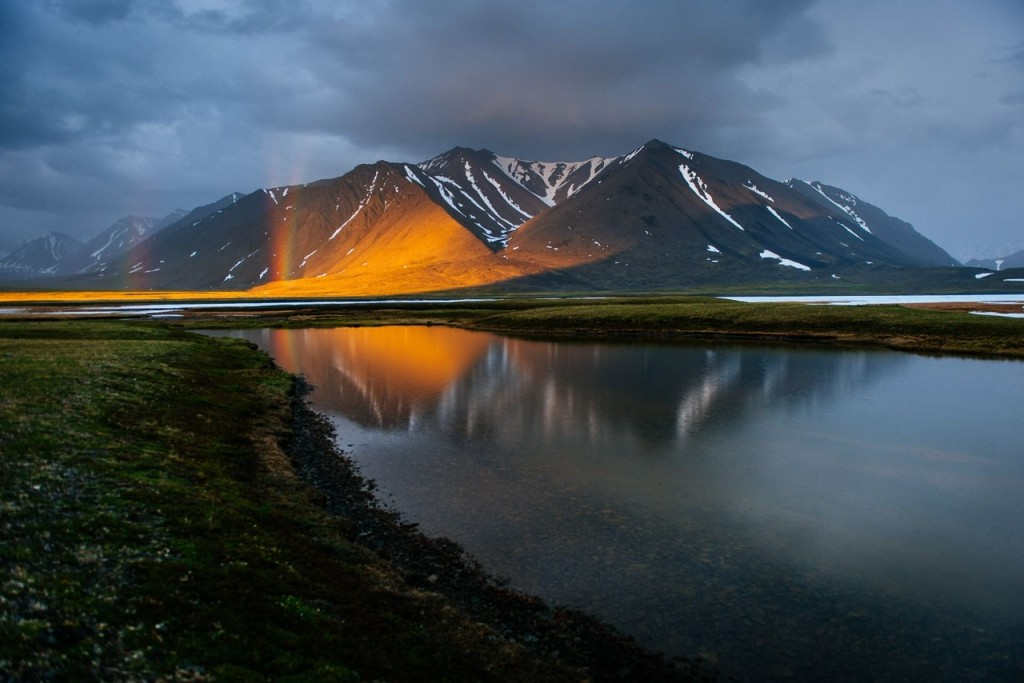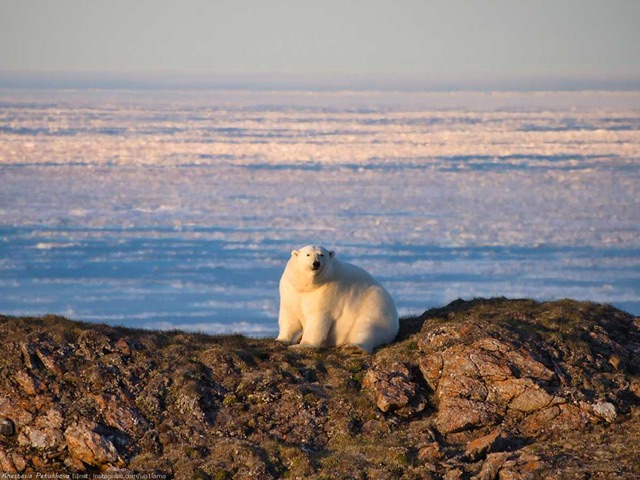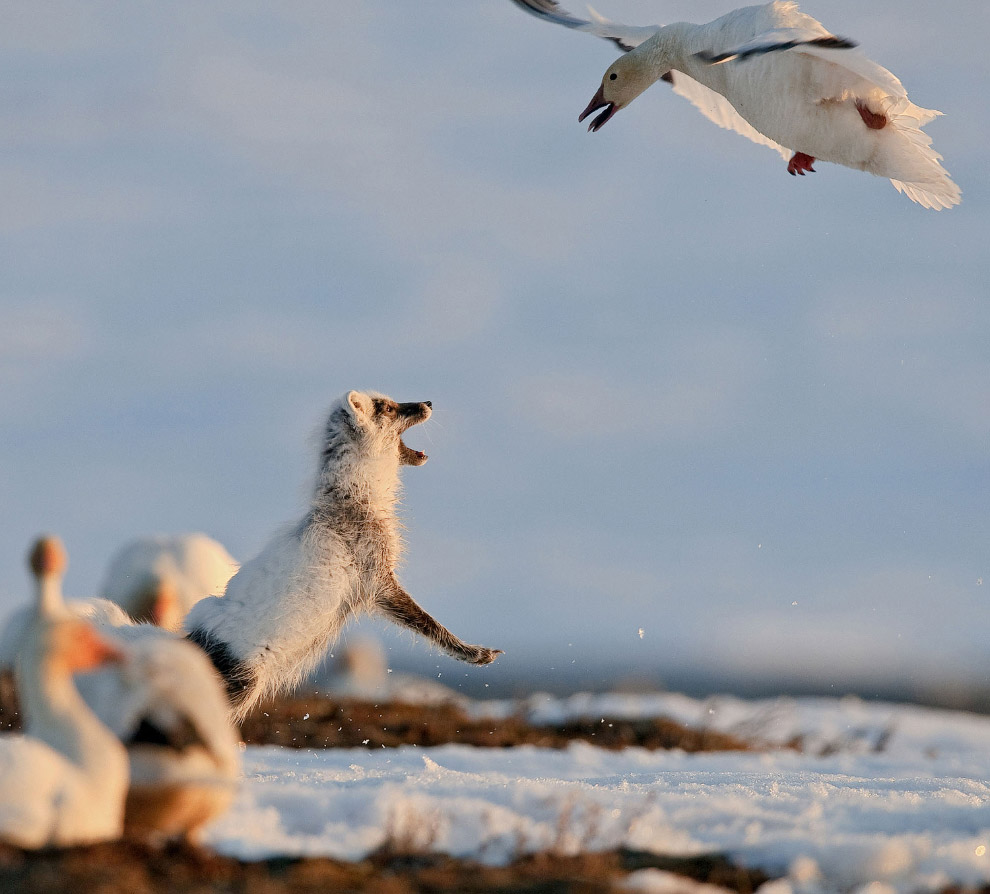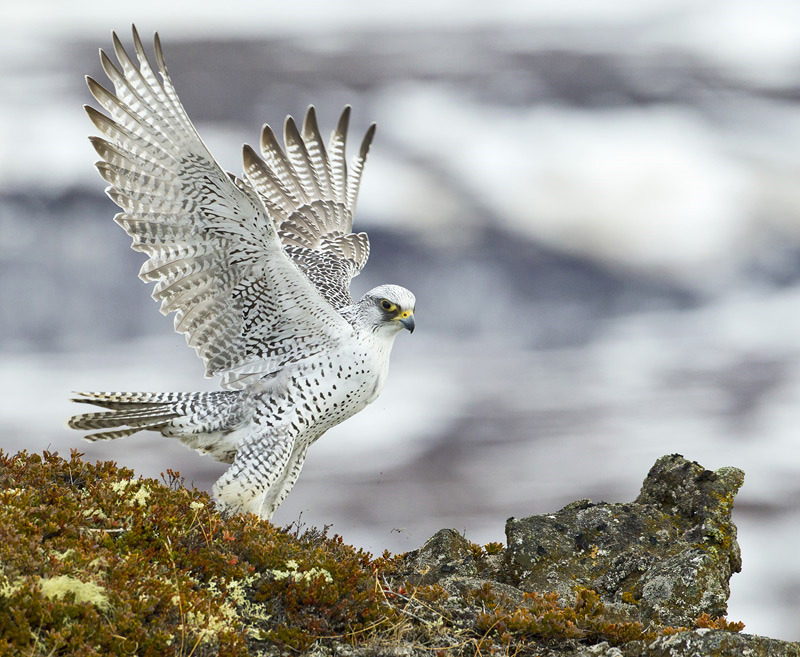April 29, 2023
Frosty Island
Welcome, friends! Today we will tell you about the reserve, located in the very north of the Far East. "Wrangel Island", divided in two by the 180th meridian, is simultaneously located in the Eastern and Western hemispheres. The reserve, washed by the Arctic Ocean, is administratively under the jurisdiction of the Iultinsky District of the Chukotka Autonomous Okrug.

The Wrangel Island State Nature Reserve, located between the East Siberian and Chukchi Seas, was included in the UNESCO World Heritage List in 2004. The reserve consists of Wrangel and Herald Islands, as well as coastal waters of the Chukchi and East Siberian Seas, the width of which is 12 nautical miles around each of the islands. The total area of the reserve is 2225650 hectares, of which 1430000 hectares is a marine area, 3435950 hectares is a protected area. The main type of landscape is the mountains, which occupy 2/3 of the entire territory. The landscape of the rest of the reserve is represented by Arctic tundra with small streams and lakes, there are about 900 of them in total. There are no glaciers on the island, despite its proximity to the Arctic Circle.



The Wrangel Island State Nature Reserve, located between the East Siberian and Chukchi Seas, was included in the UNESCO World Heritage List in 2004. The reserve consists of Wrangel and Herald Islands, as well as coastal waters of the Chukchi and East Siberian Seas, the width of which is 12 nautical miles around each of the islands. The total area of the reserve is 2225650 hectares, of which 1430000 hectares is a marine area, 3435950 hectares is a protected area. The main type of landscape is the mountains, which occupy 2/3 of the entire territory. The landscape of the rest of the reserve is represented by Arctic tundra with small streams and lakes, there are about 900 of them in total. There are no glaciers on the island, despite its proximity to the Arctic Circle.

The reserve, enveloped by Arctic and continental air masses, can be called a "natural laboratory". The territory is home to the largest number of endemic plants and animals in the world, living in a single climatic zone. The flora of "Wrangel Island" is incredibly rich, in comparison with other Arctic islands. Scientists have discovered 417 plant species on this territory, including mosses, lichens and dwarf trees. Wrangel Island is called Umkilir, which means "the island of polar bears" in Chukchi. The mention of this monogamous northern predator is not surprising, because 400-500 bears lie in dens on this territory every year. Did you know that the fur of polar bears is not white at all, and the skin is black? In fact, each coat of polar bears is hollow and does not contain pigment. The air filling the cavity helps to keep warm.

Thanks to the rays reflected from the bears' fur, we see their fur coat of a white or cream shade.

Two types of "imported" ungulates live on the territory of the reserve: reindeer and musk ox. The population of reindeer, which arrived from the coast of Chukotka in the 40 - 50s, reaches 9-10 thousand animals, being the only one on the islands. Introduced in 1975, musk oxen have had difficulty adapting over the years. At the moment, there are about 1000 of them living in the reserve. According to paleontologists, these species lived on the territory of "Wrangel Island" about 11 thousand years ago, in the late Pleistocene. Reindeer were found here later, about 2-3 thousand years ago.

Thanks to the rays reflected from the bears' fur, we see their fur coat of a white or cream shade.

Two types of "imported" ungulates live on the territory of the reserve: reindeer and musk ox. The population of reindeer, which arrived from the coast of Chukotka in the 40 - 50s, reaches 9-10 thousand animals, being the only one on the islands. Introduced in 1975, musk oxen have had difficulty adapting over the years. At the moment, there are about 1000 of them living in the reserve. According to paleontologists, these species lived on the territory of "Wrangel Island" about 11 thousand years ago, in the late Pleistocene. Reindeer were found here later, about 2-3 thousand years ago.

Arctic foxes, wolverines, wolves, red foxes, Siberian lemmings and Vinogradov lemmings live on the island. In addition, Wrangel Island is the site of the largest Pacific walrus rookery in the Arctic. Walruses unite in the largest coastal rookeries on the spit of the Chukchi Sea when the retreat of their favorite ice floes occurs. A one-time rookery of 70-80 thousand individuals was registered. Taking into account the animals floating in the water, the number of walruses reaches 130 thousand. Walruses winter in the Bering Sea.

The water area of the reserve is filled with beautiful cetaceans. The most common are gray whales and belugas, which regularly come in summer and autumn for feeding, and it is extremely rare to notice a bowhead whale, humpback and fin whale. Ringed seals and sea hares – lakhtaks live all year round in the coastal water area. It is in this protected area that the largest breeding colony of white geese, the only one preserved in Asia, is located. They leave the reserve for the winter. In 2019, a record was recorded for the number of geese arriving – more than 442,000 individuals, 94% of those nesting left the reserve with chicks. In addition, Wrangel Island has the highest density of nesting sites of polar owls. In the reserve live in small numbers: gags, kazarks, turukhtans and ipatki, and the most common species are: kaira, moevka, chistik, fork-tailed gull. Gyrfalcon and peregrine falcon are rare species and have a protected status.
We have told only about some of the inhabitants of this unique place. The reserve "Wrangel Island" has a rich history, the territories surprise with natural objects: Krasina Bay and Doubtful Bay, Cape Bird Bazaar, the ghost village Ushakovskoye. Every year more and more people plan their holidays in nature reserves. The members of the Notaivory Foundation team are no exception. I would love to visit this place!

The water area of the reserve is filled with beautiful cetaceans. The most common are gray whales and belugas, which regularly come in summer and autumn for feeding, and it is extremely rare to notice a bowhead whale, humpback and fin whale. Ringed seals and sea hares – lakhtaks live all year round in the coastal water area. It is in this protected area that the largest breeding colony of white geese, the only one preserved in Asia, is located. They leave the reserve for the winter. In 2019, a record was recorded for the number of geese arriving – more than 442,000 individuals, 94% of those nesting left the reserve with chicks. In addition, Wrangel Island has the highest density of nesting sites of polar owls. In the reserve live in small numbers: gags, kazarks, turukhtans and ipatki, and the most common species are: kaira, moevka, chistik, fork-tailed gull. Gyrfalcon and peregrine falcon are rare species and have a protected status.
We have told only about some of the inhabitants of this unique place. The reserve "Wrangel Island" has a rich history, the territories surprise with natural objects: Krasina Bay and Doubtful Bay, Cape Bird Bazaar, the ghost village Ushakovskoye. Every year more and more people plan their holidays in nature reserves. The members of the Notaivory Foundation team are no exception. I would love to visit this place!
Read more
April 12, 2024
April 5, 2024